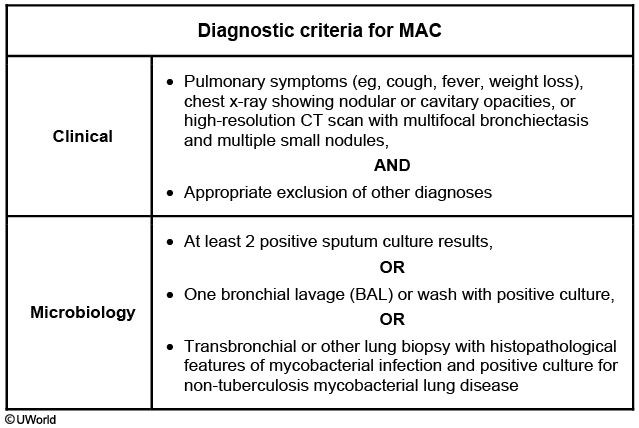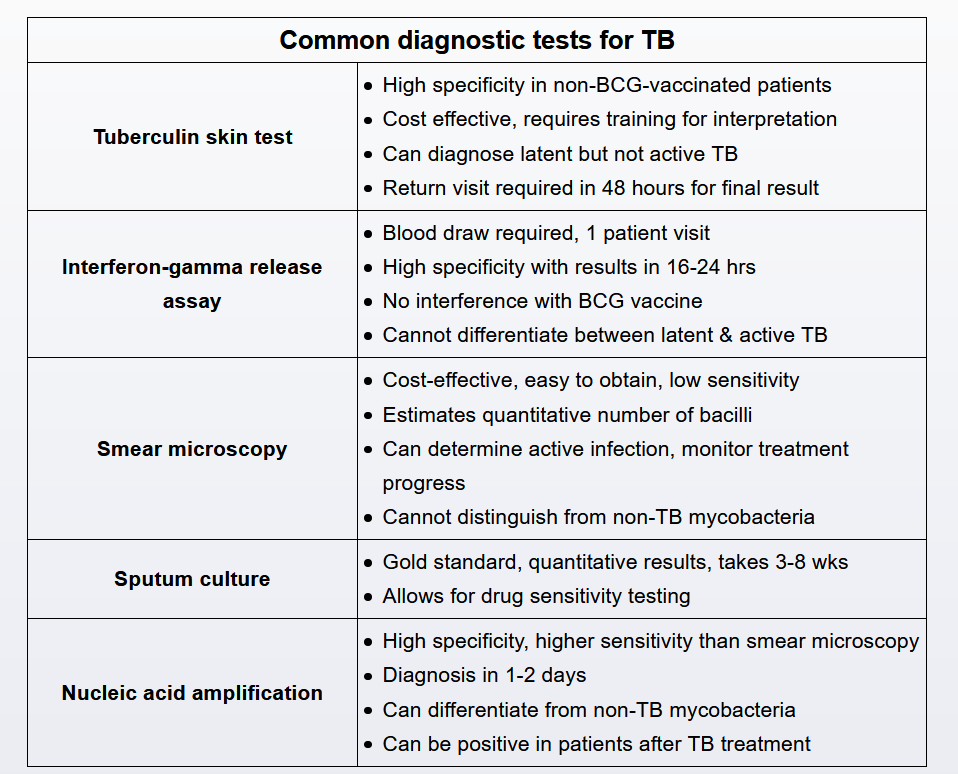MAC
- related: Tuberculosis, ID, Pulmonology
- tags: #pulmonology
Overview
-
new bronchiectasis, nodules: females, no smoking hx.
- indolent, fatigue, malaise, dry cough,
- 2 AFB sputum
- bronchoscopy: 1 specimen
-
can also be fibrocavitary : older males, smoking hx
- cavitation
- can mimick TB
Mycobacterium avium complex (MAC) is a group of free-living nontuberculous mycobacteria that are ubiquitous in the environment. Humans acquire the organism primarily via inhalation of aerosolized municipal water, but transmission can also occur through contaminated soil, food, and animals (eg, birds).
Most healthy individuals exposed to MAC have little risk of infection. However, disseminated disease can occur in patients with severe immunodeficiency (eg, AIDS), and chronic pulmonary infections can occur in those with underlying lung disease or in nonsmoking women age >50.
Pulmonary MAC infection frequently occurs in non-HIV patients with underlying lung disease (e.g., cystic fibrosis, COPD, or alpha-1 antitrypsin deficiency), but it can also occur in the absence of prior lung disease (e.g., hot tub lung).
Symptoms
- disseminate
- B sx:
- LAD
- AFB blood cultures, lymph node biopsy
Hypersensitivity Pneumonitis
- hypersensitivity pneumonitis
- less infection, more reaction
- take away hot tub
MAC can also induce a hypersensitivity pneumonitis ("hot tub lung"), particularly in those with recent exposure to contaminated hot tub water. Manifestations include an acute, flu-like illness with dyspnea, cough, malaise, and fever. Most cases are self-limited and resolve with close observation, supportive care, and avoidance of hot tub exposure. However, if symptoms worsen or persist, a short course of prednisone is often indicated.
Pseudomonas infections associated with hot tub use usually present as folliculitis, not pneumonia. In addition, Pseudomonas pneumonia would be more likely to develop over days (not hours) and be associated with a lobar infiltrate (not patchy interstitial infiltrate).
Diagnosis

Current guidelines recommend the presence of clinical criteria in addition to microbiological confirmation to diagnose pulmonary MAC disease. Since MAC can contaminate or colonize sputum, confirmation of pulmonary MAC disease requires at least 2 positive sputum cultures. However, M. tuberculosis positive sputum is always pathologic and should be treated. This patient meets the clinical criteria for pulmonary MAC, but has only one positive sputum culture. A repeat sputum sample is needed to establish the diagnosis, and if the repeat sputum is negative, a positive culture from a BAL specimen would then be required.
Diagnosis
- treatment: rifampin, ethambutol, azithromycin. 1 year
Treatment involves a combination of clarithromycin, ethambutol, and rifampin for nodular/bronchiectatic MAC.
